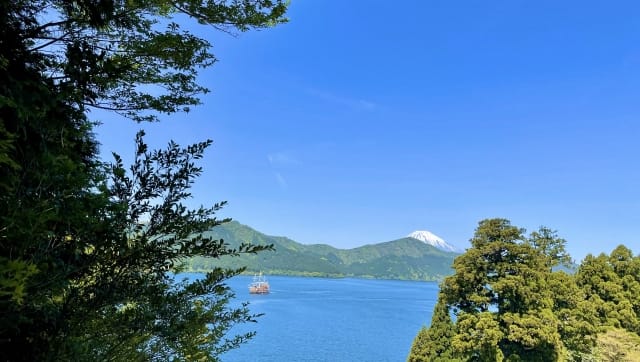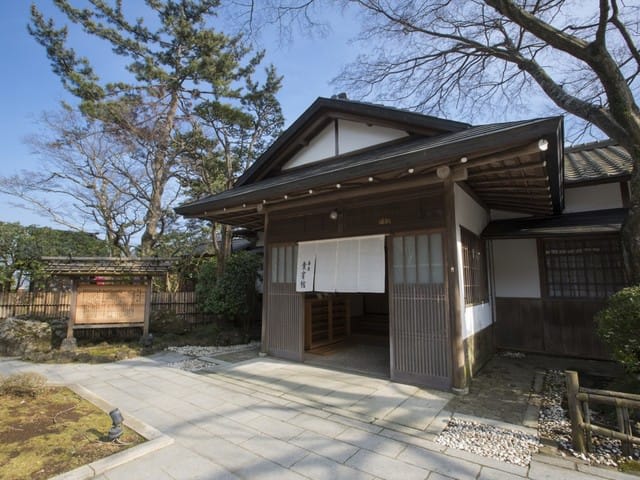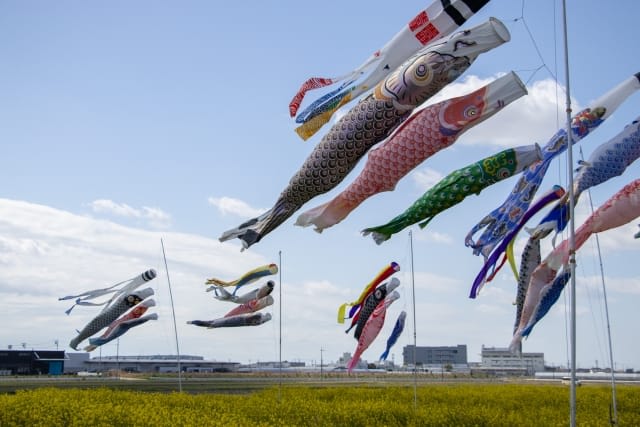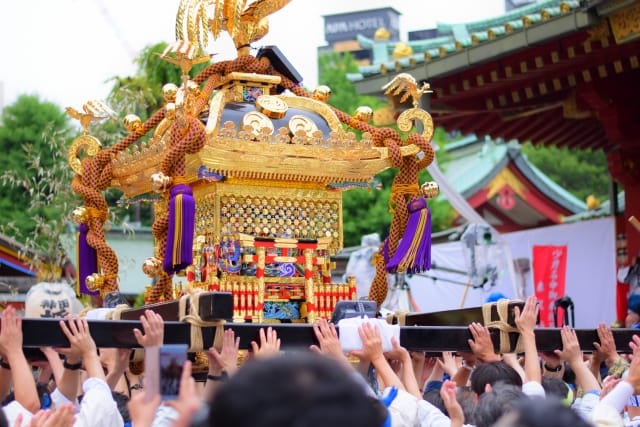Hakone: The Ultimate One Day Trip Itinerary from Tokyo
For me, born and raised in Tokyo, Hakone has always been a special place. It's a different world that can be reached in less than two hours from the hustle and bustle of Tokyo.
Lush green mountains and clear air. Walking through the hot spring town, steam rises from the back alleys, and the scent of sulfur wafts from somewhere. When I was young, I used to frown at that distinctive smell, but now I feel a sense of security as a symbol of Hakone.
Standing by Lake Ashi, you can see the majestic figure of Mount Fuji on a clear day. The spectacular view that can't be seen in Tokyo due to the high-rise buildings never fails to move my heart no matter how many times I see it.
The expressions of the four seasons are also one of Hakone's charms. Fresh greenery in spring, cool summer resort, autumn foliage, and snow scenery in winter. Each season gives Hakone a different charm.
As a history buff, visiting the Hakone Checkpoint ruins and temples and shrines is also a great pleasure for me. I can feel the history of Hakone, which prospered as a key point on the Tokaido Road, and experience a sense of time travel.
And above all, the hot springs that heal both mind and body. In the midst of days chasing after work, I suddenly want to soak in a hot spring. At such times, Hakone becomes my perfect spot.
In this article, I'll introduce a one-day plan to enjoy Hakone to the fullest, which I've discovered through years of experience.
Nature, history, culture, and hot springs. Let me guide foreign tourists on a luxurious one-day trip that condenses the diverse charms of Hakone!
Table of Contents
・The Charms of Hakone
・How to Access Hakone from Tokyo
・Itinerary: One Day Trip from Tokyo to Hakone
・Other Places to Visit in Hakone
・Frequently Asked Questions About a One Day Trip from Tokyo to Hakone

The Charms of Hakone

Hakone is a treasure trove of nature that can be visited in just about two hours from Tokyo. Its charm is not just that it's rich in nature. History, culture, and modern elements are exquisitely harmonized, continuing to fascinate visitors.
I first visited Hakone when I was a student. Exhausted by the city's hustle and bustle, I felt a sense of cleansing the moment I breathed in the air of Hakone.
The greatest charm of Hakone lies in the fusion of rich nature and hot spring culture. The mountains of Hakone, showing beauty in all four seasons, heal the hearts of visitors.
You can enjoy the changes of nature throughout the year, with fresh greenery in spring, cool shade in summer, autumn foliage, and snow scenery in winter. The hot springs scattered in this nature make you feel the essence of Japanese hot spring culture.
I especially like the autumn foliage season and visit almost every year. Soaking in an open-air bath while looking at the mountains dyed in autumn colors is a blissful moment.
The view of Mount Fuji from Hakone is also one of the great charms of this area. Especially the view from Lake Ashi is exceptional and has fascinated many painters and photographers. I can't forget the excitement I felt when I saw Mount Fuji illuminated by the morning sun on the shore of Lake Ashi.
The easy access from Tokyo also enhances the charm of Hakone. It takes about 80 minutes from Shinjuku by Odakyu Romance Car, or about 90 minutes from Tokyo Station using the Shinkansen and mountain railway. Being able to easily go from the hustle and bustle of the city to a different world surrounded by nature is a very luxurious experience.
I feel that being able to step into such a different world in just about two hours from a big city like Tokyo is a unique charm of Japan. I hope foreign travelers will also experience this fascinating place.
How to Access Hakone from Tokyo
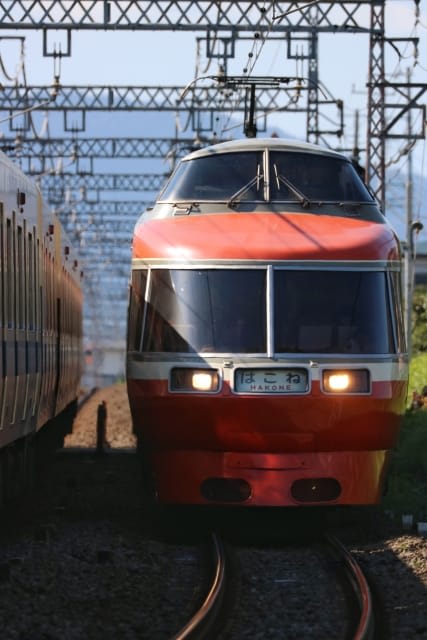
The most popular route is to use the Odakyu Romance Car from Shinjuku Station. The ride takes about 80 minutes, but it feels like no time at all thanks to the comfortable seats and the scenery seen from the large windows.
I always reserve a window seat and enjoy the gradually changing scenery from urban to natural. Especially the scenery after entering the mountainous area is spectacular and heightens the expectation for the trip.
Access from Tokyo Station is also possible. Take the Tokaido Shinkansen to Odawara Station, then transfer to the Hakone Tozan Railway. I think it's a luxurious route where you can enjoy both the speed of the Shinkansen and the nostalgic atmosphere of the mountain railway at once.
Using a highway bus is also an option. It takes about 3 hours from Shinjuku to Hakone, but the charm is that you can enjoy the scenery leisurely.
Traveling by car is also popular. Using the Tomei Expressway, you can reach Hakone from Tokyo in about 2 hours. I recommend stopping at the Dangozaka Service Area along the way, where you can see Mount Fuji. I've visited by car several times, and I felt that the ability to move freely is a big attraction.
When visiting Hakone, I recommend using the Hakone Free Pass. With this pass, you can ride trains, buses, ropeways, etc. in the Hakone area unlimitedly at a discount.
Website: https://www.hakonenavi.jp/international/en/
Itinerary: One Day Trip from Tokyo to Hakone
A one-day trip to Hakone can be a very fulfilling day depending on the plan. Based on my experience of visiting many times, I'll introduce a recommended itinerary. With this itinerary, you should be able to enjoy the condensed charms of Hakone!
7:00 AM - 8:30 AM Depart from Shinjuku Station - Arrive at Hakone-Yumoto Station
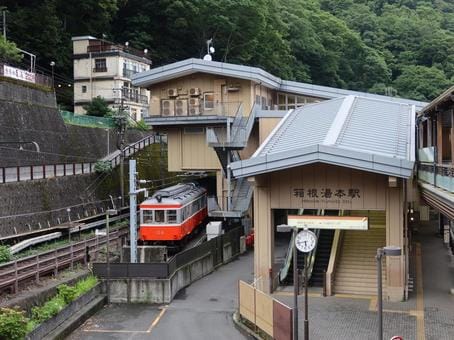
Some may find early rising difficult, but an early departure is recommended to enjoy Hakone to the fullest.
Gather at the Odakyu Line platform at Shinjuku Station and board the Odakyu Romance Car. I strongly recommend making a reservation in advance. I always make sure to make a reservation a week before departure.
From the window of the Romance Car, you can enjoy the gradually changing scenery of Kanagawa Prefecture. The sight of moving away from the hustle and bustle of the city and being surrounded by lush green mountains is calming. I always use this time to review my travel plans or enjoy conversations with friends.
Upon arrival at Hakone-Yumoto Station, first purchase the Hakone Free Pass. This pass is very convenient and economical for moving around the Hakone area. I use it every time, and I'm happy that it greatly reduces the hassle of moving and increases the time to enjoy the trip.
Romance Car reservation site: https://www.odakyu.jp/english/romancecar/
8:30 AM - 10:30 AM Visit Hakone Checkpoint and Hakone Shrine

To experience the history and culture of Hakone, the Hakone Checkpoint and Hakone Shrine are must-visit places. Take the Hakone Tozan Bus bound for Hakone-machi Port from Hakone-Yumoto Station and get off at Hakone Checkpoint.
The Hakone Checkpoint is a museum that recreates the strict immigration control system of the Edo period. You can get a glimpse of the checkpoint at that time and the hardships of travelers. When I first visited, I realized the difficulties of traveling in the Edo period and felt grateful for modern transportation methods.
Then, walk to Hakone Shrine on the shore of Lake Ashi. It's about a 30-minute walk, but it's pleasant to walk on the promenade surrounded by beautiful nature. There are scenic spots of Lake Ashi along the way, so don't forget to take photos.
The highlight of Hakone Shrine is the red torii gate famous as the Peace Torii. This torii gate standing with Lake Ashi in the background is an excellent photo spot. The shrine precincts are enveloped in a tranquil atmosphere, which calms the heart.
Museum Website: https://www.hakone.or.jp/676
Hakone Shrine Website: https://hakonejinja.or.jp/
10:30 AM - 11:30 AM Lake Ashi Sightseeing Cruise

After visiting Hakone Shrine, board the pirate ship-style sightseeing boat from the nearby Moto-Hakone Port. This cruise is a popular attraction that circles Lake Ashi. From the ship, you can see a panoramic view of Mount Fuji and the mountains of Hakone.
I still can't forget the excitement I felt when I first boarded this cruise ship. You can see the mountains reflected on the surface of the lake, and on a clear day, you can see the majestic figure of Mount Fuji. Especially on clear winter days, there's a high possibility of seeing Mount Fuji covered in snow, which is a spectacular view.
After disembarking at Togendai Port, head to the next destination, Owakudani. I recommend checking the latest schedule in advance as the cruise times may change depending on the season.
Website: https://www.hakonenavi.jp/international/en/spot/105
11:30 AM - 1:00 PM Owakudani Exploration and Lunch
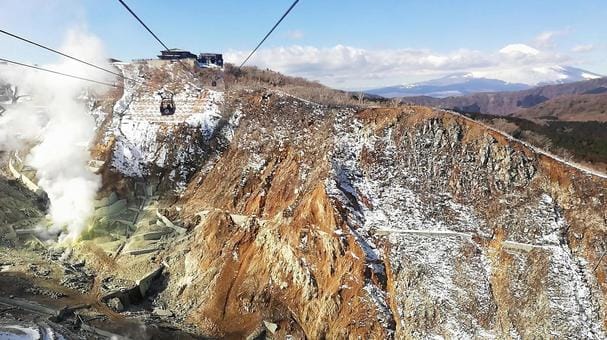
Owakudani is a place where you can closely feel Hakone's volcanic activity. Take the ropeway from Togendai Port and get off at Owakudani Station. As soon as you leave the station, a strong smell of sulfur hits your nose.
Walking along the Owakudani trail, you can see white steam rising here and there. The sight of steam rising from the ground makes you feel like you're in a different world.
The black eggs are a must-try here. These eggs boiled in sulfur springs have black shells and are said to be good for longevity. I always buy them, and their unique flavor and texture are addictive.
From the Owakudani Observatory, you can see a panoramic view of the Hakone mountains. On a clear day, you can also see Mount Fuji in the distance.
For lunch, let's enjoy the local specialty "Hakone Soba". My recommendation is "Soba Kihinkan". Hakone soba enjoyed in a historic building is exceptional.
Recommended Restaurant: Soba Kihinkan
Source: Tabelog by Kihinkan
Soba Kihinkan is a famous restaurant in the Owakudani area. It's my favorite place where you can enjoy Hakone soba in a historic building. When you enter the restaurant, the atmosphere of good old Japan wafts, and you feel calm even before the meal.
The soba here has a strong texture and rich aroma. It goes perfectly with the soup, and you can feel the blessings of Hakone's nature in this dish.
However, as a note of caution, Soba Kihinkan closes early, so I recommend visiting first when you arrive at Owakudani. I once had the experience of missing out on eating because I arrived too late. Please make sure to visit with plenty of time.
<Store Information>
Address: 3971 Kanaya, Futtsu, Chiba 299-1861
Closed: Tuesdays, Wednesdays
Phone: 0460-82-8050
Hours: 11:30 AM–2:30 PM
Website: https://tabelog.com/en/kanagawa/A1410/A141001/14033091/
1:00 PM - 3:00 PM Hakone Open-Air Museum
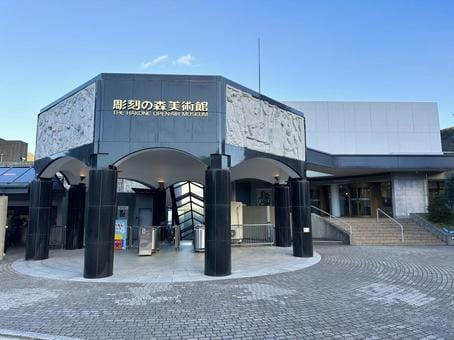
After satisfying your stomach, it's time for art. Take a bus bound for Odawara Station from Owakudani, get off at Ninotaira-iriguchi Station, and head to the Hakone Open-Air Museum. This museum is a space where Hakone's nature and contemporary art are beautifully fused, and it's one of my favorite places.
The Hakone Open-Air Museum is a vast outdoor museum. Works by world-famous artists are scattered in the lush nature. You can see works by renowned artists such as Picasso, Henry Moore, and Yayoi Kusama up close.
Walking around the museum might be a bit tiring, but at such times, I recommend taking a break at the cafe inside the museum.
Website: https://www.hakone-oam.or.jp/en/
3:00 PM - 5:00 PM Hot Spring Experience in Hakone-Yumoto

The finale of a Hakone trip is, of course, the hot springs. Move from "Chokoku-no-Mori Station" on the Hakone Tozan Railway to "Hakone-Yumoto Station". There are several hot spring facilities in Hakone-Yumoto where day trips are possible. My recommendation is "Hakone Yuryo".
Before entering the hot spring, I recommend taking a short break in the rest area inside the facility. Relaxing and unwinding your body and mind before bathing allows you to enjoy the hot spring more. I always have a cup of tea here, reflecting on my Hakone journey.
After soaking in the hot spring, you'll feel your skin becoming smooth and your body warming up from the core. I feel that Hakone's hot springs have a healing effect beyond just bathing. Every time I visit, I feel refreshed both physically and mentally.
After enjoying the hot spring, it's also nice to stroll around the hot spring town of Hakone-Yumoto and buy souvenirs. There are many attractive products including local specialties and hot spring steamed buns.
Website: https://www.hakoneyuryo.jp/english/
5:00 PM - 6:30 PM Return to Shinjuku (Tokyo)
After spending a fulfilling day, return to Shinjuku by Romance Car from Hakone-Yumoto Station. You can enjoy the evening scenery from the train. The sunset sinking into the mountains and the gradually lighting up townscape are perfect for enjoying the afterglow of the trip.
After arriving at Shinjuku Station, it's also nice to enjoy dinner in the city. The hustle and bustle of the city after enjoying Hakone's nature feels strangely comfortable.
Other Places to Visit in Hakone
Hakone has many attractive spots besides the places I've introduced so far. If you have extra time or want to reference for your next Hakone trip, please consider the following places as well.
Hakone Glass Forest Museum

The Hakone Glass Forest Museum is a museum where a fantastical space unfolds.
As you step into the museum's garden, colorful glass works welcome you. The glass sculptures shining in the sunlight are impressive.
Inside the museum, you can see up close the works that showcase the outstanding skills of Venetian glass artisans.
The Hakone Glass Forest Museum is a place I can strongly recommend not only to art lovers but also to those who aren't.
Website: https://www.hakone-garasunomori.jp/en/
Hakone-Yumoto Station Front Shopping Street
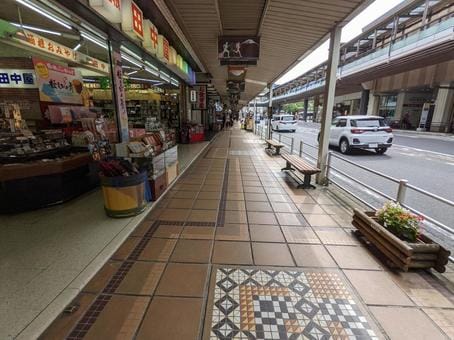
The shopping street in front of Hakone-Yumoto Station is a place that welcomes many tourists as the gateway to Hakone. I've visited this shopping street many times since childhood on family trips, and I'm captivated by its nostalgic atmosphere and unchanging charm every time.
As you step into the shopping street, the first thing that catches your eye is the numerous souvenir shops displaying colorful products. In the evening, the shopping street becomes even more lively with tourists stopping by before returning to their accommodations.
It's also fun to look for Hakone souvenirs here after relaxing in the hot springs. Every time, I lose track of time choosing souvenirs for family and friends.
Frequently Asked Questions About a One Day Trip from Tokyo to Hakone
When planning a Hakone trip, many people have similar questions. I myself had various questions before visiting Hakone for the first time. Here, based on my experience and knowledge, I'll answer frequently asked questions.
What is the Best Season to Visit Hakone?
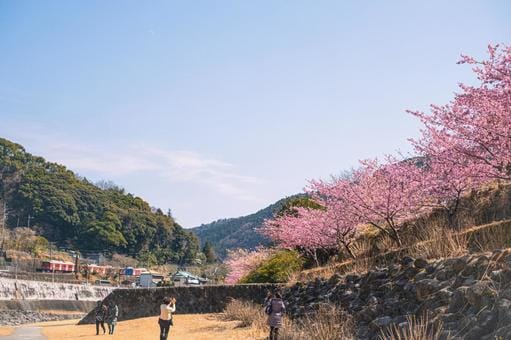
Hakone has charms in all four seasons, and you can have a wonderful experience no matter when you visit. However, each season has its characteristics, so it's good to choose according to your preferences and purposes.
Spring (March to May) is one of the best seasons for Hakone sightseeing. It's the season of cherry blossoms and fresh greenery, and combined with the mild climate, it's a very pleasant time.
Summer (June to August) in Hakone is popular as a summer resort. The temperature is lower than in Tokyo, and you can spend time comfortably cool. Especially, boating on Lake Ashi and walking around Owakudani are pleasant in this season. Also, there's a fireworks festival in August.
Autumn (September to November) is the foliage season and the most beautiful time in Hakone's scenery. Especially, the autumn foliage from late October to mid-November is spectacular. My recommendation is the view of autumn leaves from the Hakone Ropeway. The sight of the whole mountain dyed in red and yellow is breathtaking.
Winter (December to February) in Hakone is attractive for the combination of snow scenery and hot springs. The contrast between the cold outside air and the warm hot springs makes the hot springs even more enjoyable. On clear days, you can see Mount Fuji covered in snow, which has a different beauty from summer.
Personally, I find Hakone in the off-season (January to February) also attractive. It's recommended for those who want to avoid crowds. You can enjoy Hakone leisurely as there are fewer tourists. Also, accommodation rates tend to be relatively cheaper during this period, which is economically attractive.
In conclusion, there's no absolutely best season for a Hakone trip. Each season has its charm, and that's the wonderful thing about Hakone - you can make new discoveries every time you visit.
I myself enjoy Hakone's diverse charms by visiting in different seasons. Why don't you try visiting in different seasons when you have the chance to enjoy the seasonal changes of Hakone?
What Should Foreigners Be Careful About When Visiting Hakone?
Hakone is an international tourist destination, but there are also many opportunities to experience Japanese culture and customs. There are several points that foreigners should be aware of when visiting Hakone.
First, manners when bathing in hot springs are important. In Japanese hot springs, it's common to bathe naked. Wearing swimsuits is usually not allowed.
Also, it's polite to wash your body with a shower before entering the bath and to be careful not to let your hair touch the bath water. When I guided my foreign friends, I was able to enjoy the hot springs smoothly by explaining these manners in advance.
Restrictions related to tattoos also need attention. Many hot spring facilities prohibit people with tattoos from bathing. This is due to the cultural background of Japan. However, recently, more facilities are providing tattoo cover-up stickers or preparing private baths.
I recommend checking with the facility in advance if you have tattoos.
What's the Difference Between Day Trip Hot Springs and Staying at a Hot Spring Ryokan?
There are broadly two ways to enjoy Hakone's hot springs: day trip hot springs and staying at a hot spring ryokan. I have experience with both, but each has its characteristics, and I recommend choosing according to your purpose and budget.
Day trip hot springs are a convenient way to enjoy Hakone's hot springs. They're recommended for those who have time or budget constraints, or those who want to combine Hakone sightseeing with hot spring bathing.
On the other hand, staying at a hot spring ryokan allows for a more authentic hot spring experience. The biggest attraction is that private baths are available at night and early morning. What I especially like is the early morning private open-air bath. The experience of soaking in a hot spring in the morning mist is indescribably wonderful.
Also, at accommodation facilities, you can receive traditional Japanese hospitality that you can't experience on a day trip. Relaxing in a tatami room, walking around the facility in a yukata. You can have such experiences unique to Japanese ryokans. When I guided my foreign friends, they were particularly impressed by this point.
Furthermore, if you stay overnight, you can enjoy authentic kaiseki cuisine for breakfast and dinner, which is also a big attraction. The array of beautiful dishes using seasonal ingredients is an excellent opportunity to enjoy Japanese food culture. However, recently, many day trip hot springs also offer delicious Japanese food.
However, staying at a hot spring ryokan is more expensive compared to day trip hot springs. Also, popular ryokans can be difficult to book, so it's necessary to make reservations in advance.
A one day trip to Hakone is a wonderful opportunity to fully enjoy Japanese nature and culture away from the hustle and bustle of Tokyo.
Departing early in the morning, experiencing history at Hakone Checkpoint and Hakone Shrine, enjoying the scenery on the Lake Ashi sightseeing cruise, feeling the breath of the volcano at Owakudani, immersing yourself in art at the Open-Air Museum, and finally healing your fatigue in the hot springs. With this itinerary, you should be able to experience the condensed charms of Hakone.
I sincerely hope that the Hakone trip of everyone who reads this article will be wonderful!
